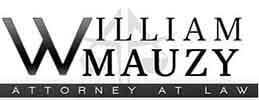Money laundering is a sophisticated financial crime that transforms illicitly obtained funds into seemingly legitimate assets. This process is often utilized by individuals involved in various illegal activities, such as drug trafficking, fraud or corruption because it helps to enable them to enjoy the profits of their crimes without attracting legal scrutiny.
A methodical money laundering approach involves three primary stages: placement, layering and integration. Each stage serves to obscure the illegal origins of the money further, employing a variety of techniques and financial maneuvers. As the money moves through these stages, it becomes increasingly difficult for authorities to trace its origins.
Placement: Getting the money into the system
The first stage, placement, involves introducing illicit funds into the financial system. Individuals face the highest risk of detection as they attempt to deposit large amounts of cash into banks or invest in other financial instruments. Various tactics are employed to mitigate this risk, such as breaking down large amounts into smaller, less conspicuous amounts or using foreign accounts.
Layering: Masking the trail
Following placement of the funds is the layering stage. Here, the money undergoes a series of complex transactions and transfers. The goal is to create a convoluted trail that obscures the link between the money and its illegal source. Transactions may cross international borders, utilize shell companies or involve purchasing and selling high-value assets. This web of transactions is deliberately intricate, making tracking funds exceedingly difficult.
Integration: The final stage
The final stage is integration, where the now-distanced money is reintegrated into the legitimate economy. The laundered funds might be invested in legal businesses, real estate or other ventures. At this stage, distinguishing between legal and laundered money becomes formidable, as the illegal origins have been effectively masked. The successful integration of laundered money benefits the individuals by providing them with usable assets and poses significant risks to the integrity of the financial systems involved.
Anyone who’s facing criminal charges for money laundering must ensure they understand their defense strategy options. Understanding what prosecutors believe has transpired can help defendants to make more informed decisions as their defense attorney starts crafting a response.

